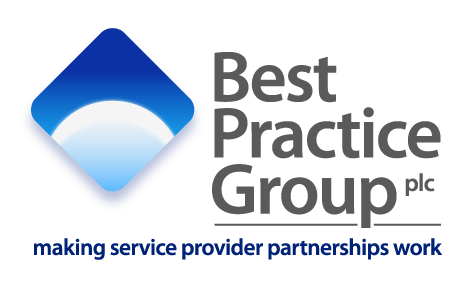 The single most important key critical element of successful delivery of externally commissioned services is being clear on ‘what good looks like’ to both you and your external service provider. However, in the many hundreds of external service delivery partnerships we have reviewed over the years, this is the single, most persistent challenge that both organisations and their external vendors seem unable to articulate clearly between them. This usually leads to misunderstandings, scope creep, unexpected costs and severe time delays. Worst of all, the business benefits that were so appealing at the outset often fail to be realised.
The single most important key critical element of successful delivery of externally commissioned services is being clear on ‘what good looks like’ to both you and your external service provider. However, in the many hundreds of external service delivery partnerships we have reviewed over the years, this is the single, most persistent challenge that both organisations and their external vendors seem unable to articulate clearly between them. This usually leads to misunderstandings, scope creep, unexpected costs and severe time delays. Worst of all, the business benefits that were so appealing at the outset often fail to be realised.
Articulating ‘what good external service delivery looks like’ – lessons learned
There are a number of steps that organisations who have been successful in achieving strong service delivery have undertaken. It’s no coincidence why they have been successful time and time again in ensuring their external service delivery partners achieve their business outcomes, innovate well and reduce service delivery costs in the process.
How you articulate ‘what good looks like’ and what you document to your external service provider:
- What business challenges are you facing? If one of your business challenges is that you need to cut £20m per annum from your service delivery overhead, but still maintain service levels, then tell this to your potential vendor. Don’t side line the issue. Be upfront about it.
- Explain the operational challenges you believe you are facing in achieving these outcomes. Detail what you have already tried to cut your costs but maintain service delivery levels; the aspects that have worked, the aspects that have not. Explain why you think the activities that were successful worked, but also explain why you think the activities that didn’t achieve your outcomes, didn’t work. Be honest about what didn’t work and why. If you aren’t sure why certain initiatives didn’t work – say so.
- Set out the structure of your organisation and what part your service delivery plays within it. Identify those departments which are impacted by the service delivery levels of your department. If your department’s service delivery is poor, which other departments would be impacted by this? For example, your customer contact centre may well see calls escalate with complaints. Your website may well see increased complaint activities too. The complaint handlers will have a much greater workload. What do you do about the backlog of service requests and getting back on top of them? Do you just delay the service delivery or would you engage in interim/temporary resource to help clear the backlog? Explain the process so your delivery partner understands properly how you deal with these issues.
- Explain, document and flow-chart (in process terms) how you operate now. It’s not uncommon for departments to assume that when a vendor deploys its external service delivery skills, that the department will operate as it does now, but with some bells and whistle enhancements. Often what happens is that a new operational process is implemented by an external vendor that promises much better effectiveness and delivery levels. However, aspects of the existing service are sometimes missed – simply because the requirements specification only details the ‘what’, not the ‘how’ (existing operational process).
- Explain the challenges you are experiencing within your current operational processes. Include resource, efficiency and cost challenges. Identify where you think specific problems exist and what thoughts you have had in trying to address those specific challenges.
- Ensure your existing service costs and service levels are independently benchmarked. In addition, verify that they are compared on a like-for-like basis against similar services in other similar organisations. In fairness, no two organisations are identical, but you can apply ‘weighting factors’ and adjustments so that you achieve a sensible comparison. When your potential vendors then come back with their proposed costings, you will be able to see and compare quite quickly whether they are in the right ball-park on an apples-to-apples basis.
- Ensure that you have a clear template response mechanism. Attach this to your documented ‘what good looks like’ information, ideally in a matrix that vendors can respond to in terms of whether they can meet your business outcomes. You’ll also need to get the potential vendor to quantify what assumptions they have made in putting together any proposed service delivery options. In this way, any misunderstandings over your requirements will be quickly identified. Ideally, the response matrix should have clearly quantified:
- What outcomes the potential vendor can/cannot meet.
- What compromises you’ll have to live with.
- What the consequence will be of the outcomes they cannot meet.
- How the outcomes will be delivered.
The above only deals with being clear between yourselves on ‘what good looks like’. There are many other considerations when commissioning external service delivery partners, but getting this aspect right is by far the single biggest challenge we see client organisations and their vendors struggle with.
Photo Credit: Shutterstock
